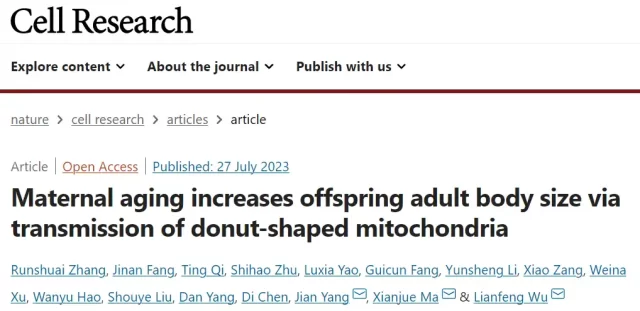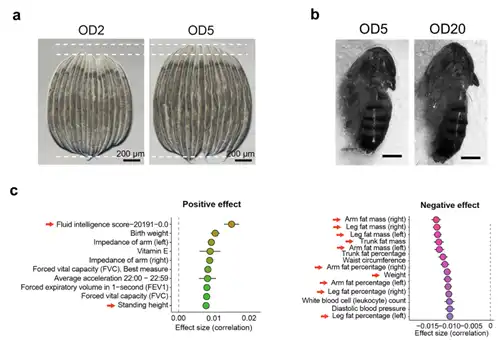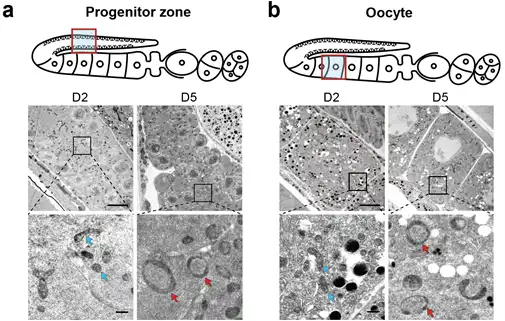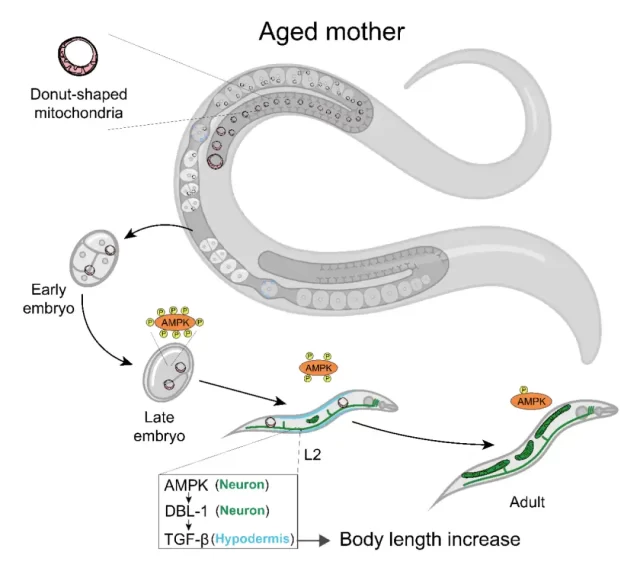Children of older mothers grow taller?
- EB Virus Could Be Infected by Kiss: A Hidden Threat Linked to Cancer
- The Silent Threat: How Gas Stoves Pollute Our Homes and Impact Health
- Paternal Microbiome Perturbations Impact Offspring Fitness
- New Report Casts Doubt on Maradona’s Cause of Death and Rocks Manslaughter Case
- Chinese academician unable to provide the exact source of liver transplants
- Early Biomarker for Multiple Sclerosis Development Identified Years in Advance
Children of older mothers grow taller?
- AstraZeneca Admits for the First Time that its COVID Vaccine Has Blood Clot Side Effects
- Was COVID virus leaked from the Chinese WIV lab?
- HIV Cure Research: New Study Links Viral DNA Levels to Spontaneous Control
- FDA has mandated a top-level black box warning for all marketed CAR-T therapies
- Can people with high blood pressure eat peanuts?
- What is the difference between dopamine and dobutamine?
- How long can the patient live after heart stent surgery?
Children of older mothers grow taller?
What other factors, besides powerful genes, influence human height? Nature always gives us some unexpected answers.
Recently, researchers from the School of Life Sciences of West Lake University published a research paper entitled: Maternal aging increases offspring adult body size via transmission of donut-shaped mitochondria in the journal Cell Research .
The study reached a consistent conclusion in nematodes, fruit flies and humans: the childbearing age of the “mother” affects the height and other characteristics of the “child” as adults . The research team used the model organism nematode to analyze the biological mechanism behind this phenomenon in detail.

1. The phenomenon of birth at an advanced age is increasing year by year
In recent years, with the rapid development of economy and society, the proportion of advanced maternal age has increased greatly .
On the one hand, the liberalization of the two-child and three-child policy has made many elderly mothers tend to give birth again; on the other hand, women’s years of education have been extended and other reasons have led to a delay in childbearing age.
Statistics show that the proportion of elderly pregnant women in some countries has risen from 10.1% in 2011 to 19.9% in 2016, and the proportion of those over 40 years old has increased significantly.
Taking Shanghai as an example, the average age of women’s first childbirth in 2022 has risen from 26.6 years in 1980 to 30.36 years. This phenomenon of delayed childbearing is actually common all over the world.
For example, the average age of women in developed countries such as the United Kingdom and Germany has exceeded 30 years old.
But what are the long-term implications of this phenomenon for the next generation? What impact will it have on human health and reproduction?
2. The research on the fertility of mothers at an advanced age has become a hot spot
Is it suitable for older women to have another child? Does the mother’s advanced childbearing age affect the child’s health? These issues have always attracted social attention.
The burden and pressure of childbearing at an advanced age on the mother is undeniable, but people have different opinions on the impact on the long-term health of children.
Some people think that children born to older mothers will be more intelligent; however, many epidemiological data also show that the impact of advanced age on children’s health cannot be ignored, because it increases the risk of children suffering from developmental abnormalities, such as Down’s syndrome Syndrome etc.
Therefore, it has become a research hotspot in the field of aging to study the influence of the mother’s childbearing age on the child and the impact of advanced childbearing on the child’s health.
3. Children born to older mothers are taller as adults
Wu Lianfeng’s team has been engaged in aging-related research for a long time, and they have been concerned about the impact of reproductive aging on the health of offspring.
In an accidental experiment, the researchers discovered an interesting phenomenon: the bodies of the offspring of old nematodes are always very long.
Is this phenomenon directly related to aging? This question has sparked great curiosity among researchers.
As a special model organism, nematodes have two sexes: hermaphroditic and male. In ordinary scientific research, researchers mainly use hermaphrodites for biological experiments, so it is difficult to control the influence of male age on offspring body length.
In order to explore whether the reproductive age of males also affects the body length of offspring, the research team used the experiment of male-female hybridization to further observe the body length of offspring from old males.
Surprisingly, they found that the offspring’s body length The length is not affected by the reproductive age of the male, but completely depends on the reproductive age of the “mother”.
In order to verify whether this phenomenon generally exists in the animal kingdom, Wu Lianfeng’s team cooperated with Ma Xianjue and Yang Jian’s team to explore.
Dr. Ma Xianjue is an expert in fruit fly research, and has long used fruit flies to study the molecular mechanism of organ size and cancer; Dr. Yang Jian is an expert in human genetics, mainly using genetic analysis to study the relationship between complex human traits and diseases.
They consistently demonstrated this conservation in three independent systems (C. elegans, Drosophila, and humans) : The reproductive age of the ‘mother’ (but not the ‘father’) affects the height of the ‘child’.

Figure 1: Body length comparison of offspring of old and young ‘mothers’. Progeny of young nematodes (OD2); Progeny of old nematodes (OD5); Progeny of young flies (OD5); Progeny of old flies (OD20)
4. Donut mitochondria and “kid height”
Since the reproductive aging of the “mother” will affect the adult body length of the “child”, is there any evidence of the difference in the body length of the “child” in the reproductive system of the “mother”?
After observing the differences in the reproductive systems of young and old nematodes through electron microscopy, the researchers were surprised to find that there were many donut-like mitochondria in the reproductive system and later embryos of the old nematode “mother” .
They then tracked the development of the “children” and found that the donut mitochondria did not completely disappear until the daughter nematodes reached sexual maturity. So they focused on this donut mitochondria.
What are Donut Mitochondria? Mitochondria are the structures in cells that make energy. Donut mitochondria are a form of mitochondria.
It is generally believed that such mitochondria are low-energy “resting states”, and after the stress signal disappears, they will return to their normal rod-shaped shape and resume normal function.
Inducing the donut mitochondria in the “children” of young worm “mothers” led to increased body length, the study showed.
Knocking out the key gene responsible for the formation of donut mitochondria will block the formation of donut mitochondria, and at the same time block the transmission of the “mother” age effect, which fully proves that donut mitochondria are in the “mother” age effect transmission play a decisive role.

Figure 2: Donut-shaped mitochondria appear in the reproductive system of old nematodes
As of now, relatively little literature has been published on donut mitochondria at the animal level. Donut mitochondria were first discovered in the retina of chickens in 1982 and increase in number as chickens age.
In 2006, donut mitochondria were discovered in mature rat brainstem calyx synapses. In 2014, donut mitochondria were discovered in the prefrontal brain region of aged rhesus monkeys.
The study was the first to discover the existence of donut mitochondria in the gonads of old nematodes, and confirmed that they can be passed on to offspring through eggs.
This is also the first research report to reveal the physiological function of donut mitochondria at the animal level.
5. Mutual regulation between donut mitochondria and AMPK
While studying the viability of donut mitochondria, the researchers found that the mitochondria were in a low-energy state, manifested by low mitochondrial membrane potential and low ATP production.
AMPK is a key biometabolic energy-sensing regulator of cells, which senses the level of energy ATP.
When it senses that there is less ATP in the cell, AMPK is activated to help the cell produce more ATP.
At the same time, AMPK is also an important element in the regulation of mitochondrial homeostasis. Does the donut mitochondria of the nematode “mother” affect the body length of offspring by activating AMPK? To test this question, the researchers measured and compared AMPK activity during development in the “children” of young and old nematode “mothers.”
The results showed that the “children” of old nematode “mothers” exhibited strong AMPK activity during embryonic development, and this activity continued until full sexual maturity.
The researchers also found that once the activity of AMPK was inhibited, the “children” of the old nematode “mother” no longer showed the body length effect, but showed the same body length as the “children” of the young nematode “mother”.
This suggests that donut mitochondria promote increased body length in nematodes by activating AMPK.
Interestingly, both the number of donut mitochondria and the activity of AMPK were higher in the children of older nematode “mothers.” During development, as the number of donut mitochondria gradually decreased and returned to normal levels, AMPK activity also decreased. When AMPK was mutated, donut mitochondria recovered more slowly.
This shows that donut mitochondria can activate AMPK, and AMPK can also help the recovery of donut mitochondria, and there is a mutual regulatory relationship between the two. As a key regulator of growth metabolism, this early change in AMPK must cause changes in many physiological functions.

Figure 3: Regulatory processes between donut mitochondria and AMPK during development
6. AMPK activated in early life promotes individual growth by activating downstream growth signaling pathways
In C. elegans, the signaling pathway most directly determining body length is DBL-1/TGF-β, which is homologous to the human BMP (bone morphogenetic protein) signaling pathway.
Does the age factor affect the difference in body length of offspring through this signaling pathway?
The researchers detected the strength of the DBL-1/TGF-β signal in the young nematode progeny and the old nematode progeny during the development period, and they found that the DBL-1/TGF-β signaling pathway activity of the old nematode progeny was significantly Increase, that is to say, the activation of this signaling pathway increases the body length of nematodes.

Figure 4: Donut mitochondria regulate nematode growth and body length through AMPK
So, does the activation of AMPK lead to the activation of this signaling pathway? Would enhanced DBL-1/TGF-β signaling be observed if AMPK was specifically activated in young nematode progeny only during developmental periods?
As expected, upon activation of AMPK, DBL-1/TGF-β signaling was also activated and the worms’ bodies became longer.
After blocking the DBL-1/TGF-β signal, the researchers found that even if they tried to activate AMPK, the nematodes would not grow longer.
Therefore, this study discovered the mitochondrial-AMPK-TGF-β signaling axis in the model organism nematode, thus explaining why the body length of “children” of older “mothers” increases.
This study explored the long-term impact of “mother” age on the formation of offspring traits, and used the phenotype of body length to analyze the biological mechanism behind it.
However, are the associated mechanisms highly conserved in evolution? Can it be used to explain the formation of other traits in adulthood and health status in infancy in the offspring of older “mothers”?
Whether donut mitochondria can be used as a biomarker of reproductive aging and other important questions still need further research to be resolved.
Zhang Runshuai , a 2020 doctoral student of West Lake University, Fang Jinan , a scientific research assistant , and Qi Ting , an associate researcher , are the co-first authors of the paper. Dr. Wu Lianfeng , Dr. Ma Xianjue and Dr. Yang Jian are the co-corresponding authors of the paper.
The research was strongly supported by the team of Professor Chen Di from Nanjing University and Professor Yang Dan from West Lake University, and was funded and supported by the National Natural Science Foundation of China, West Lake University, West Lake Laboratory and Zhejiang Provincial Key Laboratory of Growth Regulation and Transformation Research.
Paper link :
https://www.nature.com/articles/s41422-023-00854-8
Children of older mothers grow taller?
(source:internet, reference only)
Disclaimer of medicaltrend.org
Important Note: The information provided is for informational purposes only and should not be considered as medical advice.



